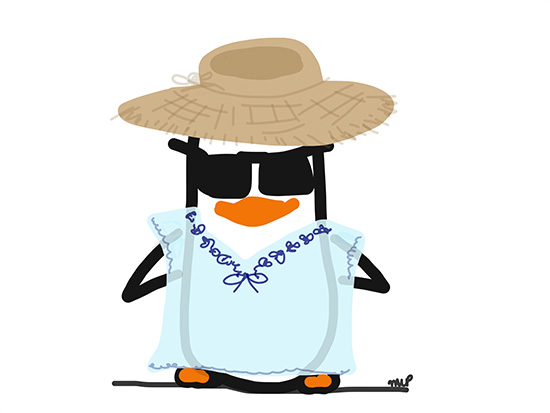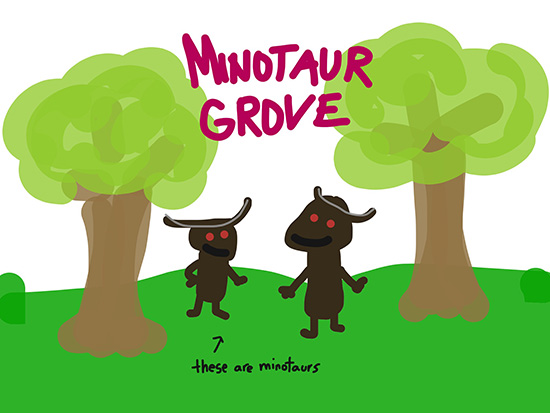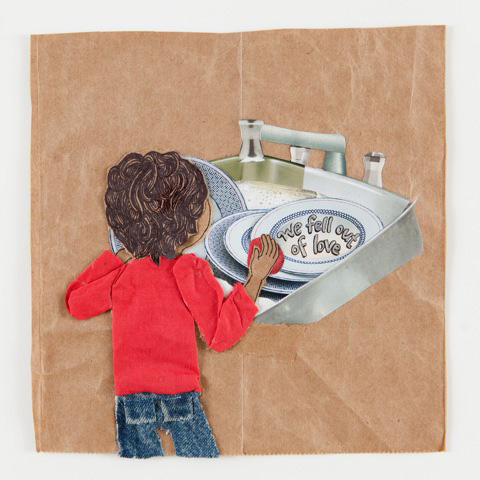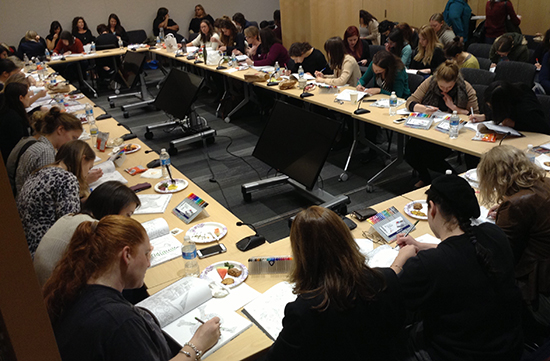 This BookPage Icebreaker is sponsored by Henry Holt
This BookPage Icebreaker is sponsored by Henry Holt
Heather Harpham’s compelling new memoir, Happiness: The Crooked Little Road to Semi-Ever After, reads almost like a suspenseful novel at times, with the unexpected turns readers expect to find in fiction, but rarely encounter in a true story. Just when you think you have a handle on what's happening—this is the story of a jilted woman, raising a child alone—another twist occurs and the narrative heads in a new direction.
At its core, Happiness is the story of a family dealing with a child’s life-threatening illness, but it’s also much more. It’s a sensitive portrayal of Harpham’s sometimes painfully fraught relationship with the child’s father, Brian; a tender look at female friendship; and a stirring chronicle of a mother’s devotion. The book captures the unique world of a pediatric bone marrow marrow transplant unit, where death hovers just around the corner. And the child at the center of the story, Gracie, will win your heart and have you yearning for a happy outcome to her harrowing medical ordeal.
We spoke to Harpham, an award-winning playwright and performer, from her home in New York’s Hudson Valley about her moving and beautifully written memoir.
Why did you choose the title Happiness? It seems at first like a strange choice for a book about a child’s illness.
I’m so delighted to be asked that question! I chose Happiness because I felt it created a kind of instant tension which mimicked the kind of tension we actually lived in when Gracie was sick. What are the first two things you usually ask about a book: What’s it called? And what’s it about? If the answer to the first question is “happiness” and the [answer] to the next question is a sick child, there’s a tension between those two things.
What I’ve found is that happiness is embedded in all these nooks and crannies, even in a terrible time. I feel like moments of real stress, or even terror, also contain the possibility for very heightened awareness. You’re really paying attention because the stakes are high. And when you’re really paying attention, part of what you get to experience are the little joys, the little moments of grace that appear—your baby is sick and in an incubator but they’re gurgling at you, or they grasp your finger for the first time.
For me, the title Happiness encapsulates growth and contentment and also the sense that life is precious, but it’s fragile, not guaranteed. I don’t know if one word can do all that, but that’s what I was aiming for. And that’s also why we chose the subtitle: The Crooked Little Road to Semi-Ever After . . . You never know exactly where you’re going.
“You could have all those things checked off and still not have happiness if you’re not at rights with yourself and able to appreciate the daily pleasures, the little moments of true affection.”
How did your ideas about happiness change after you became the mother of a very sick child?
Radically and almost instantly, in that it never once occurred to me [during pregnancy] that I would have a sick child. Never, not once! And when I shared that with Brian, he said he never once thought about it without worrying about what could go wrong! We were diametrically opposed. So I think what I learned about happiness is that it doesn’t arrive gift-wrapped in a particular package. You’re not happy because you can check all these items off the list: Yes, I have the right job. Yes, I have the right partner. Yes, I have the right house. Yes, my kid is perfect. You could have all those things checked off and still not have happiness if you’re not at rights with yourself and able to appreciate the daily pleasures, the little moments of true affection, interaction, humor.
When Gracie was born, it made me realize that happiness is more a product of internal awareness and willingness to appreciate what’s before you than it is the product of external circumstance.
How did you manage to reconstruct this story in such vivid detail several years after it happened?
Well, it was hard. What I had were two sets of writing. When I was pregnant with Gracie and alone, and honestly very unhappy and mystified to be in such a different circumstance than I had imagined, I began writing letters to her. . . . Even though [my pregnancy] didn’t look like what I wanted it to, I was welcoming her. I wrote all these letters, and I would start them all, “Hello baby.” So I had this series of “hello baby” letters, and the most intense experiences are things I had captured there. And then I also had a Caring Bridge page, the writing I did when she was quite sick, in Durham.
And, you know, we’re a couple of writers, Brian and I! We write down the things the kids say that tickle us. It’s kind of what we do—if something happens, you write about it. We’re the kind of people who make notes along the way. Between my notes and his notes, I had a lot of original documents.
Your comments in the book about your relationship with Brian were raw and honest, and often very painful. How did you summon the courage to write about your relationship in such an open way?
With help! I summoned the courage with the help and encouragement of a writing group I was part of that gave me the very useful advice to “write everything.” They said, “Just write it. You can go back and soften it or pull things out later, but write it.” And I did write it, and I did craft it, I did shape it. So as raw as it feels, it is the result of a process that Brian and I went through together of reading my portrayal of our relationship—his decisions, my feelings, his feelings—and talking it through. It was extremely important to me that Brian feel comfortable with everything I had to say, especially because the kids will read this book as adults. And because as the narrator, you have this unique power. You’re the one telling the story. I wanted that the power to be balanced with Brian’s point of view and his consent to how I was I describing our relationship.
We read it together very carefully. Sometimes we had to stop and talk things through. “I remember it this way. Well, I remember it that way.” Or he would say, “I was actually thinking or feeling something different from what you have here,” and we would adjust as needed. I was very clear that this was my book and I’m telling it through my point of view. But nevertheless it’s a permanent record that will be there for our kids to see, and it needed to feel right.
Ultimately I think it was quite meaningful and valuable for the two of us. It only brought us closer, going back through that time. Also, the act of writing actually did widen my perspective. I saw things from his point of view that I had never been able to see before. And I think that’s one of the great values of writing—that it asks you to look deeper or look wider. We have our habitual ways of thinking about things or our habitual ways of seeing things and when you write, you’re saying very consciously: No, I want to see more. Let me see more deeply into that cloudy water.
What was the lowest point for you as a mother in this whole long ordeal?
When Gracie was very sick, I called my own mother and asked her to come from California to Durham. There was still a part of my mind that simply disallowed the possibility that Gracie would not survive. I could only believe that she would survive, no matter what. And yet, I was on a [hospital] unit with 16 rooms, and the other parents felt that way too, I assume. I know that they loved their children, each in their own way, just as fiercely as I loved Gracie, and some of those children didn’t survive. It’s hard to make sense of that kind of loss. It’s so wrong, it’s so profoundly wrong. It’s time moving in the wrong direction. Your child is not ever supposed to predecease you. And there’s no real sense to be made of a loss on that scale, except to take joy in who they were and the gift that they lived.
There were several children we were very close to who did not survive, and I would say that watching their parents suffer was both terrifying and anguishing and probably the hardest moment. I would tell you that it was because of my fear for Gracie’s life, but I just didn’t allow myself that luxury at the time. I simply did not believe that she wouldn’t survive, even when she was so sick that the doctors were giving us these numbers, that if you played them out were super scary. Like, she has a 50 percent chance of developing VOD [veno-occlusive disease] and if she gets VOD, she has a 50 percent chance of living. Two flips of the coin. That’s when I called my mom to say, please come. That’s when I was the most frightened for Gracie. But even then, I couldn’t let my mind go there. After it was over, I could see that we were unbelievably lucky and of course anything could have happened because none of us is immune or given any ultimate protection. We’re each fragile and subject to the same set of possibilities. But at the time, the very hardest thing was watching other parents suffer the wound that you can’t really recover from.
Speaking of your mother, why did you choose to dedicate the book to her?
Because I love her so much and she’s so fantastic! My mom has the most enormous heart, and she’s somebody who’s trying to figure out how to be as present and giving and warm with anyone she’s with as she can at any moment. She’s a very, very, very generous soul. In particular, I felt that she gave us her undivided and total love and an infrastructure of support through this experience. She did it for me when I was on my own and came back to California, pregnant and unsure of what was going to happen. And she did it for Brian and me, and Gabriel and Gracie, when we were in Durham and Gracie was receiving treatment at Duke. She was just there. If you called her, she came. You know, the trope of maternal love is easy to valorize. It is. With my mom, I feel like that stereotype is real. I wanted her to know how much her gift of time and love meant to us and carried us through. Dedicating the book to her was one way to do that.
Can you talk about friendship and what your friends meant to you during this process?
Everything. They meant the difference between tremendous, painful hardship being bearable or unbearable. Being able to come back from a terrifying doctor’s appointment and spew it all back out again and have a friend sit there with you and go through, point by point, trying to understand, trying to parse it, trying to make decisions. Or just being able to go for a walk with a friend and talk about something else, that’s equally meaningful.
Everybody has a different set of legs on their stool. For me, the three legs on my stool of support, when I was on my own with Gracie, were my dearest friend from college, Suzi, and my dearest friend from childhood, Cassie, and my mom. And then later, when Brian and I moved back to Brooklyn, we encountered Kathy and her husband, Steve. I do think that there’s something uniquely valuable, at least in this culture, in female friendship and in the bond of solidarity that comes from a kind of sisterhood that says, I know what you’re going through, I can’t do it for you, but I’m going to hold your hand and walk beside you while you go through it. You’re the one on the hot coals, but I’m walking next to you. Go ahead, squeeze my hand. That doesn’t always come in the form of somebody going, oh, that’s so hard. It can be somebody who’s willing to laugh with you, even making grim jokes at the end of the day.
I felt so carried by my female friends in particular, and I just wanted to record that in the book how meaningful it was.
You definitely achieved that. I felt like I knew each one of them.
You mentioned that Gracie is 16 now. I wondered how she feels about being the focus of a book. Is this something you’ve talked over with her? Has she read the book? What was her reaction to it?
I think she has a lot of complex and conflicting feelings. She has an almost feminist pride in the fact that her mom has published a book. She knows that her dad is a published writer, so I think she feels kind of like, hey, girl power—go, mom! It was really nice to feel like it was a model for her.
I also think that for her, like any 16 year old, less of her parents’ visibility in the world is better. She feels like having a public portrait of her parents is as embarrassing as standing next to her parents in Target. At 16, you don’t want the world to see them.
I think she feels quite separate from the Gracie who’s described in the book, not because she feels it’s inaccurate, but because she feels it’s so far away. She doesn’t remember much of her transplant experience, much less her infancy, of course. So I think to read about a younger self, who’s going through tremendous suffering at times, is difficult. At the same time, I think she appreciates the kind of pluck I tried to portray in her, that was real. And she still has that kind of plucky spirit, that courageous spirit. I know that’s a kind of stereotype of the sick child as brave, but I don’t know if she was so much brave as resourceful. She really looked for ways to make a bad experience as good as it could possibly be—Iike naming the IV pole and making him her sidekick.
And on discharge day when Bobbie the nurse finally unhooks the IV, she pauses at the door with the pole and says, “Gracie, do you have any last words for your friend?” And Gracie, who was only 3 years old, replies, “Be good to the next girl.” She was in some ways so mature for her age.
I think that’s one of the gifts that suffering offers us: compassion. We know that. And it’s no less true for her than for an adult who goes through suffering. She really got that other kids were going through hard things, and she wished the best for them. And she still has that—a very deep well of compassion that has arisen from her own set of experiences.
There are so many cliches about suffering that we’ve all heard—what doesn’t kill you makes you stronger, and all that. When you look back now, can you see any positives for your family in having gone through this?
I don’t know if I can think of it in exactly those terms. I see it as having been an intrinsic part of who we are at this moment and I wouldn’t change who we are. I feel incredibly grateful to be here. But I think it’s very easy, because we’re human, to go, “This turned out the way it should have.” And I don’t believe that because I saw so many children die. And though you make the best sense of it that you can, it’s still permanent. It’s not that this state we’re living in was meant to be, but it is what we’re given—it’s this moment and you try to embrace the potential, the beauty, the messiness even of the present moment as fully as possible because you don’t know what’s coming around the bend. None of us do.
I think one thing these experiences have given us is a deep appreciation moment by moment for the gift of life, the gift of togetherness.
Near the end of the book, you write: “Parents of perilously sick kids never stop being afraid…. The other shoe is always above our heads, just out of reach, poised to drop.” Do you still feel that way?
Yes, and I always will. But I do my very best to shield Gracie from those anxieties. Those are my anxieties and Brian’s anxieties to cope with. Gracie, I hope, I believe, experiences herself as a very strong, powerful young woman. And I hope that sense of herself only grows over time. For us, we will always have one ear cocked for any kind of trouble. Gracie is living in the present; she doesn’t have to live in the past. And that’s part of the beauty of her not remembering a lot of that time. We can learn from her, more and more, how to appreciate her true good health.
What do you hope readers will gain from reading your story?
I should have an easy answer to that question, but I don’t. I hope readers take whatever is valuable for them, whatever resonates for them personally. I hope it might open a small door to a part of their personal experience that they choose to reflect on in a deeper way or a new way. But most of all, I hope they take whatever they wish to take.
One hope I have for the book is that it ends up in some book groups. I think that whether you like the book or relate to the story or not, it’s the kind of book that might ignite conversation and sharing of personal stories. I think people feel closer to each other when they’re able to share on a deeper level. If that happens for this book inside book groups, I would be so happy.
What else you would like readers to know about the book?
The only thing we haven’t touched on is what I tried to write in the book but found quite difficult: how this experience impacted my faith and my spiritual beliefs. Spirituality is never easy to capture in language because, inherently, you’re trying to express the inexpressible, the ineffable. I went into this experience as a believer in an organizing force of coherence and beauty, of a creative force underlying this incredible universe we find ourselves in. And as painful, as excruciating as it was, to live with the reality that our beautiful, coherent, intelligent world could contain what feels like senseless loss—and probably is senseless in the only way we can apprehend it—it nevertheless is a part of this whole.
I still believe, even after being battered by those questions of why do innocents suffer, and how can this be allowed, it just is. I’m not sure those questions have answers, but I know that the ways in which people respond to each other in their suffering or pain can be very profound, very meaningful and that the renewed appreciation for the value in each individual life is what stays with me. When I think about the children who died, it feels like enough to me that they lived—that unique, beautiful, complex person existed. That’s miraculous.


















 BookPage Icebreaker is a publisher-sponsored interview.
BookPage Icebreaker is a publisher-sponsored interview.







